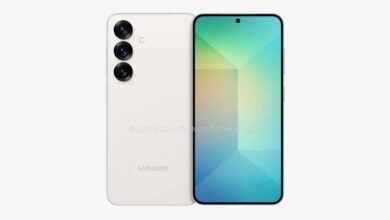Flip Phones vs. iPhones: Why the Old School Wins!: In recent years, the smartphone industry has witnessed a revolutionary shift with the emergence of foldable devices, particularly flip phones. These innovative devices represent a significant departure from conventional smartphone design, offering unique features and functionality that challenge even the most established brands, including Apple’s iPhone lineup. As technology advances, these foldable devices are increasingly becoming the new breed of ultra-premium smartphones, combining cutting-edge hardware with flexible displays for a unique user experience.
The Evolution of Foldable Technology
The concept of foldable smartphones has evolved from a futuristic idea to a practical reality. Manufacturers like Samsung, Motorola, and Infinix have invested heavily in developing this technology, resulting in devices that combine cutting-edge hardware with flexible displays. This evolution has led to the creation of phones that not only meet modern smartphone requirements but also offer unique advantages over traditional devices. The journey from concept to reality has involved significant technological breakthroughs in display technology, hinge mechanisms, and durability improvements.
Design and Portability
The most striking feature of modern flip phones is their innovative design philosophy. Unlike conventional smartphones, including the iPhone series, flip phones can fold in half, significantly reducing their footprint when not in use. This design advantage is particularly evident when comparing them to larger smartphones like the iPhone Pro Max or Plus models, which can be cumbersome to carry. The compact nature of flip phones addresses a long-standing challenge in smartphone design: balancing screen size with portability. When unfolded, these devices offer display sizes comparable to traditional smartphones, but their ability to fold makes them substantially more pocket-friendly. This feature has become increasingly important as smartphone sizes have grown over the years.
Dual Display Functionality
Modern flip phones incorporate a sophisticated dual-display system that enhances user convenience and functionality. The primary interior display provides the full smartphone experience, while the external cover display offers quick access to essential functions. This secondary display has evolved from a simple notification panel to a fully functional interface. Users can check notifications and messages, control media playback, take selfies using the main camera, access quick settings, and preview important information without opening the device. This thoughtful implementation of dual displays creates a more efficient and versatile user experience, setting flip phones apart from traditional smartphones.
Camera Innovation
The camera system in flip phones demonstrates the innovative potential of their unique design. Traditional smartphones often struggle with the quality disparity between front and rear cameras, but flip phones leverage their form factor to use the superior rear cameras for all photography needs.
The external display serves as a viewfinder when the phone is closed, allowing users to take high-quality selfies using the main camera system. This design also enables hands-free photography without additional accessories, unique angles and perspectives for photos and videos, improved stability for time-lapse and long-exposure shots, and better video calling experiences through self-standing capabilities.
Software Integration
Manufacturers have developed specialized software interfaces to maximize the potential of flip phones’ unique hardware capabilities. These interfaces seamlessly transition between displays, optimize apps for both screens, and provide intuitive gestures for device manipulation.
The software adaptation enables efficient multitasking across different display configurations, making flip phones not just novel devices but practical daily drivers. This integration of hardware and software creates a cohesive user experience that rivals traditional smartphones.
Market Impact and Future Prospects
The growing popularity of flip phones has significantly influenced the broader smartphone market, encouraging innovation in smartphone design and creating new competition in the premium segment. While these devices typically command higher prices than traditional smartphones, their unique features and capabilities continue to attract consumers looking for something beyond conventional designs.
The success of flip phones has demonstrated strong consumer interest in alternative form factors, pushing manufacturers to invest further in developing and refining this technology.
Foldable flip phones represent a significant evolution in smartphone design and functionality. While traditional smartphones like the iPhone continue to excel in certain areas, particularly in terms of ecosystem integration and established performance metrics, flip phones offer compelling advantages that cannot be ignored. Their unique combination of portability, versatility, and innovative features makes them an increasingly attractive option for users seeking something beyond conventional smartphone design.
As technology continues to advance and manufacturers refine their designs, flip phones are poised to play an increasingly important role in the future of mobile devices, offering users an exciting alternative that combines practical functionality with innovative design.




